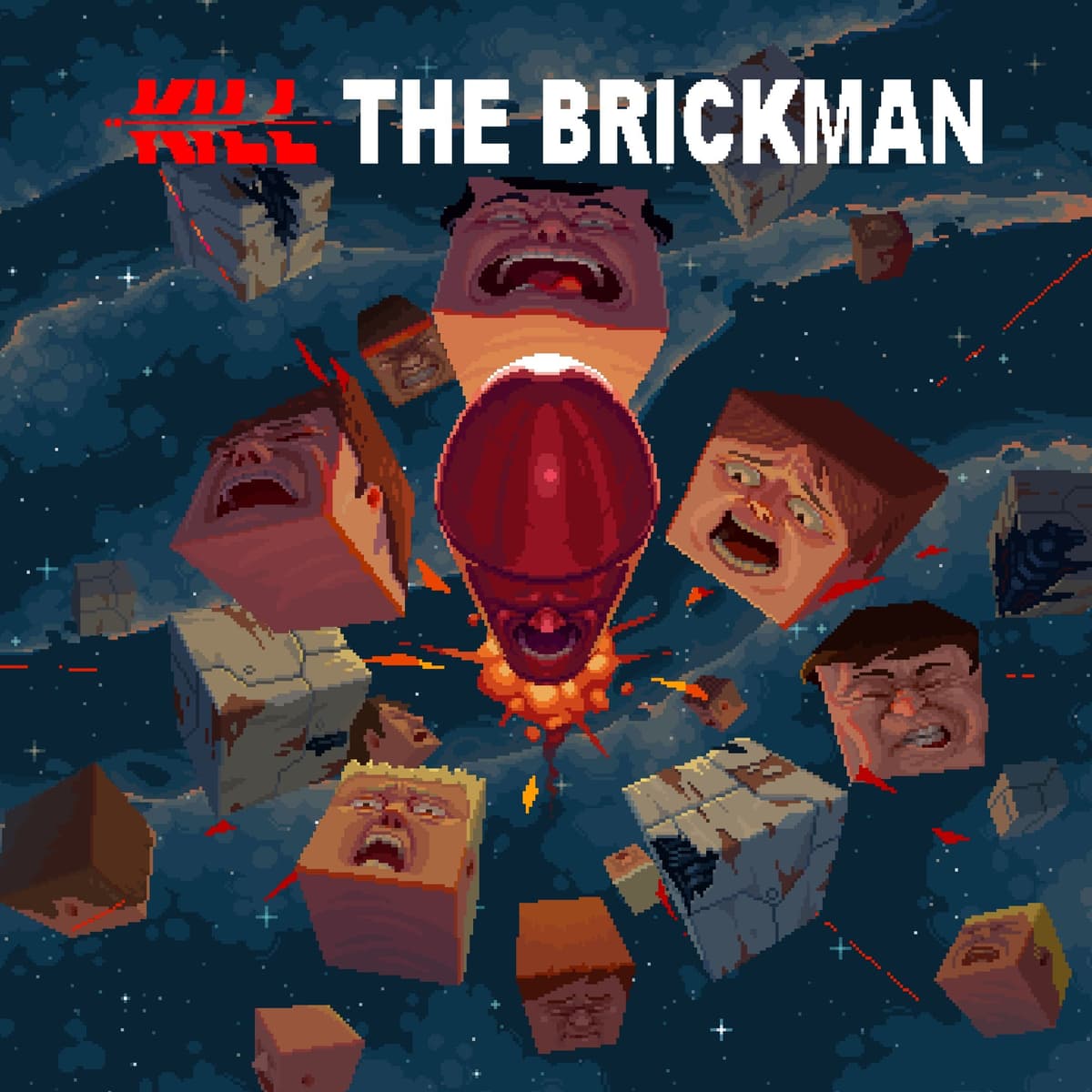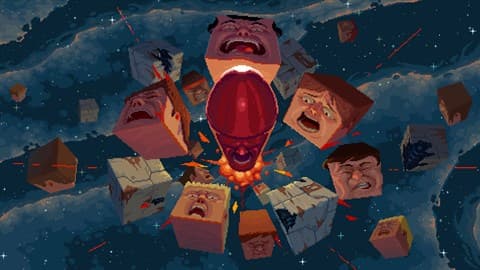
Game intel
Kill the Brickman
A brick breaking, turn-based rogue-like bullet-builder - Blast bricks to break the bank.
I didn’t expect Kill the Brickman to grab me. Honestly, when I first read “turn-based roguelike brick-breaker,” my reaction was: “Okay, that’s a lot of random genre soup.” After Balatro and its poker twist last year, I figured we’d seen every possible roguelike cross-pollination. But then a Steam code just landed in my inbox one evening, with zero notice (“shadowdrop” is right), and I figured, why not try it for an hour or two-just enough to say something interesting to the Discord crew. Fifteen hours later, it turned into a lot more than a tech check.
For reference: I played about 15 hours on Steam over several marathon evening sessions, poking at every mode, unlocking almost every achievement except for maxing out all the guns (still working on that). Oh, and I nearly cleared every possible ending-and definitely grew attached to this strange new take on breaking digital bricks. Here’s why.
So, imagine booting this thing up expecting retro reflexes, and instead… you’re staring at a grid of anthropomorphic bricks. Not just blocks, but little square dudes with faces-some smug, some anxious—who don’t just take your hits. They fight back.
But the real left-turn? There’s no paddle. No frantic bouncing. Instead, you get a floating gunsight, and every move is a calculated shot—you pick your ammo type, angle it, see the projected ricochet path (like some kind of pool shark for bricks), and then pull the trigger. That’s it: a single, deliberate action, every “turn.” If you’ve played SteamWorld Heist or Puzzle Bobble, that deliberate aiming sensation might ring a bell, but it’s still kind of surreal here.
And then the “aha” moments built up. The first time I watched a red bullet ricochet three times, smash a brick, get cloned by a blue effect, and suddenly bounce back only to be absorbed by a boss block’s aura—I just sat back, grinning. What started as confusion gave way to that “between moves” brain burn you get from chess or Into the Breach. Every shot is a risk-reward calculation. That, for me, is where the game started to work its magic.
Let’s talk nuts and bolts. You’re not just upgrading a paddle here, you’re building a toolkit with real options. Early runs, I just picked random ammo and went for it. Didn’t end well. But as I unlocked more (and died a couple of times on normal difficulty, which is mercifully forgiving), the strategy deepened.
You get different “magazines”—each with their specialty. My favorite, the corrosive mag, made for wild chain-reactions, especially once I stacked a few upgrades. The explosive mag, on another run, put me on edge: one good bounce and suddenly half the screen was rubble, but those rebounds can go wild if you don’t map out the angles perfectly. Then there’s the “Oneshot” mag: the glass cannon of the bunch—one round, massive bounce power, and sometimes a run-ending misfire if you get cocky. Every time I finished a run, I found myself dreaming up ways to combine mags, not just for power but as a literal safety net blocking the bottom of the “arena.” That’s such a subtle, satisfying system—by the fourth run, I stopped seeing it as weird and started seeing it as genius.

Ammo, too, is more than window dressing. You start with three classic “flavors”—red (explosive), green (corrosive), blue (cloning)—but the way you stack bonuses or even swap them between turns is where the synergy shines. One particularly wild combo: I snagged a bonus that stunned bricks on contact, saving my skin when a nasty trio of “healer” blocks near the boss tried to swarm the field with minions. Letting the bricks take their turn (yep, they get one after you) forces you to think ahead, not just about trajectories, but the state of the board after every move. It’s chess meets breakout, and it’s a brain-burner in the best way.
For all the ingenuity, I hit some snags. The biggest: not enough explanation for what some powerups or gun mods actually did. For my first five hours, I repeatedly stared at a new bonus (“Does this make my bullets split… or bounce farther? Who knows, let’s try it!”). Sure, it’s fun to discover stuff, but after one especially brutal run that tanked because I picked a powerup blindly, I started craving better tooltips (or even, you know, any tooltip in French, since my build had a lot of missing translations).
I’ll also say: if you’re a hardcore roguelike nut looking for Hadestown difficulty, you might find Kill the Brickman a bit easy. Most of my victory runs were long and nail-biting, but rarely truly punishing—on average, my normal mode playthroughs took around 40 minutes, usually ending with only a handful of losses. If that high-stakes, permadeath dread is essential for you… you’ll zoom through the current content pretty quickly.
I’ll keep it real: the blocky visuals grew on me. The subtle waddle of “sentient” bricks, expressive death animations, and little sparks from upgrades ooze charm, even if the tiles are crude. When a boss “taunted” me by duplicating himself mid-turn, I laughed out loud. But outside the lively bricks and ammo effects, it’s all pretty barebones: solid colors, basic backgrounds, a UI that gets the job done but not much more. Function over flash, for sure.
The real issue? The soundtrack (or, let’s be honest, the one loop you’ll ever hear). I let it ride for the first few runs, but by hour ten, I muted it in favor of a podcast. Sound effects fare better—there’s a crunchy satisfaction to every successful ricochet and a palpable “thud” when you land a shot, which is honestly half the fun of a brick-breaker anyway.
As I played a pre-release build, I ran into plenty of missing descriptions and a few odd translation hiccups. Sometimes the game would just blank out the text for a powerup—or worse, the explanation would be there, but in English for half, French for the rest, or missing entirely. Not the end of the world, but it often left me guessing. The dev seems pretty quick on fixes, so I’m optimistic about launch-day patches.

Biggest wish? More bosses, more modifier variety, and maybe—just maybe—a way to ratchet up the challenge for masochists like me after the first handful of clears. I’d have loved a daily “hardcore” mode or, frankly, any music variety at all. Still, for a sub-five euro game from a tiny team, I’m more delighted than frustrated—it’s just that by the twelfth hour, you’ll notice the seams.
This isn’t your twitchy, split-second Arkanoid fix—it’s for puzzle heads and tinkerers who love a shot of randomness served on a bed of tactics. If you fell for Balatro’s experiment or live for the “deck-builder” side of Slay the Spire and Monster Train, you’ll find a lot to like here—especially if part of that love is for games that feel weird and experimental. Just know you’re getting a game that’s as much about clever buildcraft as it is about tile-busting, and don’t expect hundreds of hours unless you want to finally 100% every gun mod (good luck—I’m still working on it myself).
Fifteen hours in, I emerged with two realizations: First, brick-breakers desperately needed this kind of shakeup. Second, I’d recommend Kill the Brickman to every gamer friend who’s ever said, “I wish roguelikes felt a little more… clever than brutal.” There’s enough novelty that even the rough edges won’t ruin the fun, though those hoping for a massive buffet of content should manage their expectations.
It’s not perfect, but I can’t call it anything but a success at what it sets out to do—a tactical, weird, low-impact game that pushes a classic genre somewhere genuinely new. For a lazy weekend of experimentation and discovery (and a handful of “why didn’t I think of that?” moments), it’s more than worth the asking price.
Kill the Brickman isn’t the next Hades, but after 15 hours bouncing bullets and puzzling through builds, I loved it—a clever twist for brains-over-reflexes fans, if you’re up for some rough edges and early-access quirks. I’ll be keeping an eye out for updates—and so should anyone who likes when genres get weird together.
Get access to exclusive strategies, hidden tips, and pro-level insights that we don't share publicly.
Ultimate Reviews Strategy Guide + Weekly Pro Tips